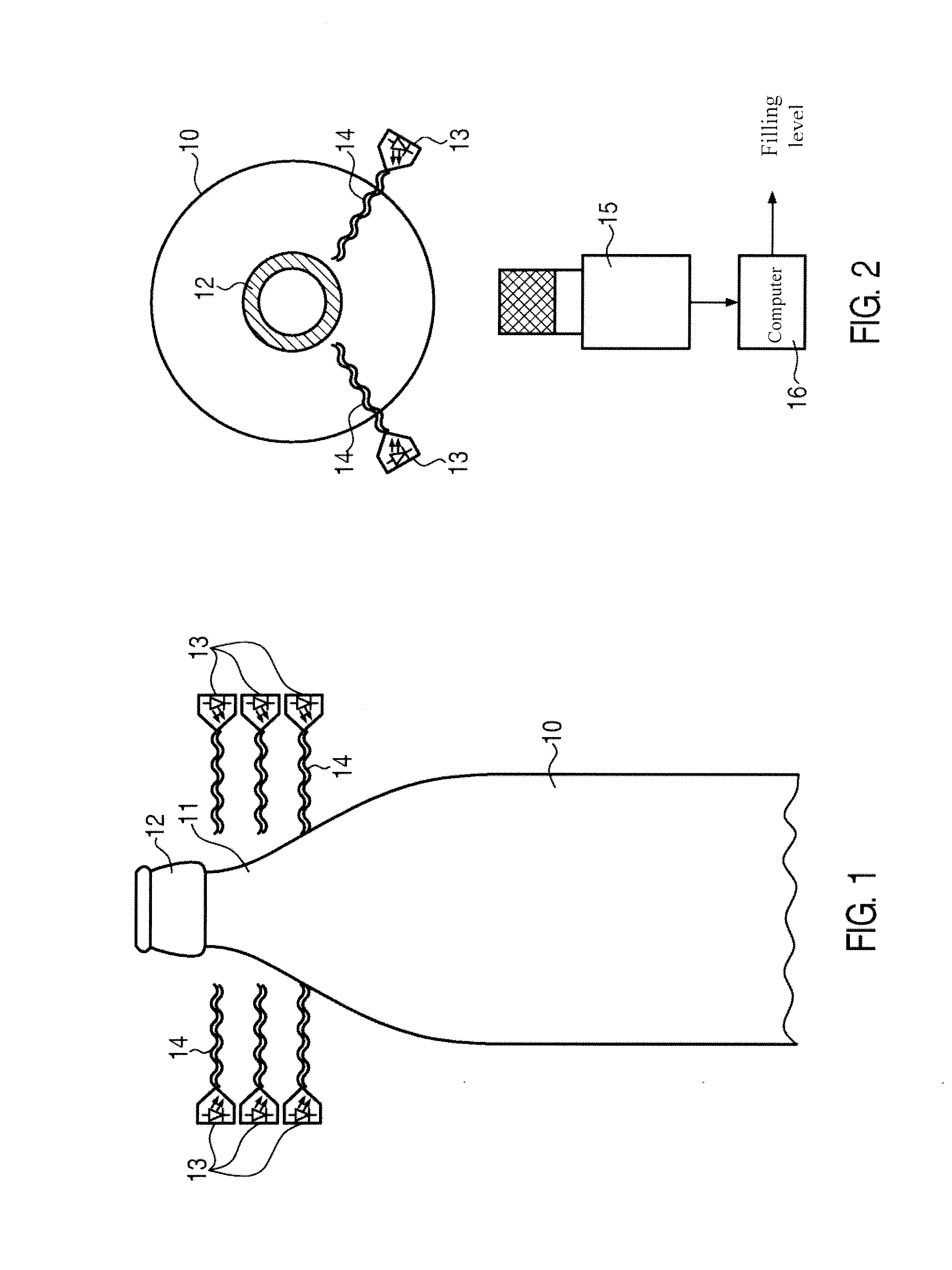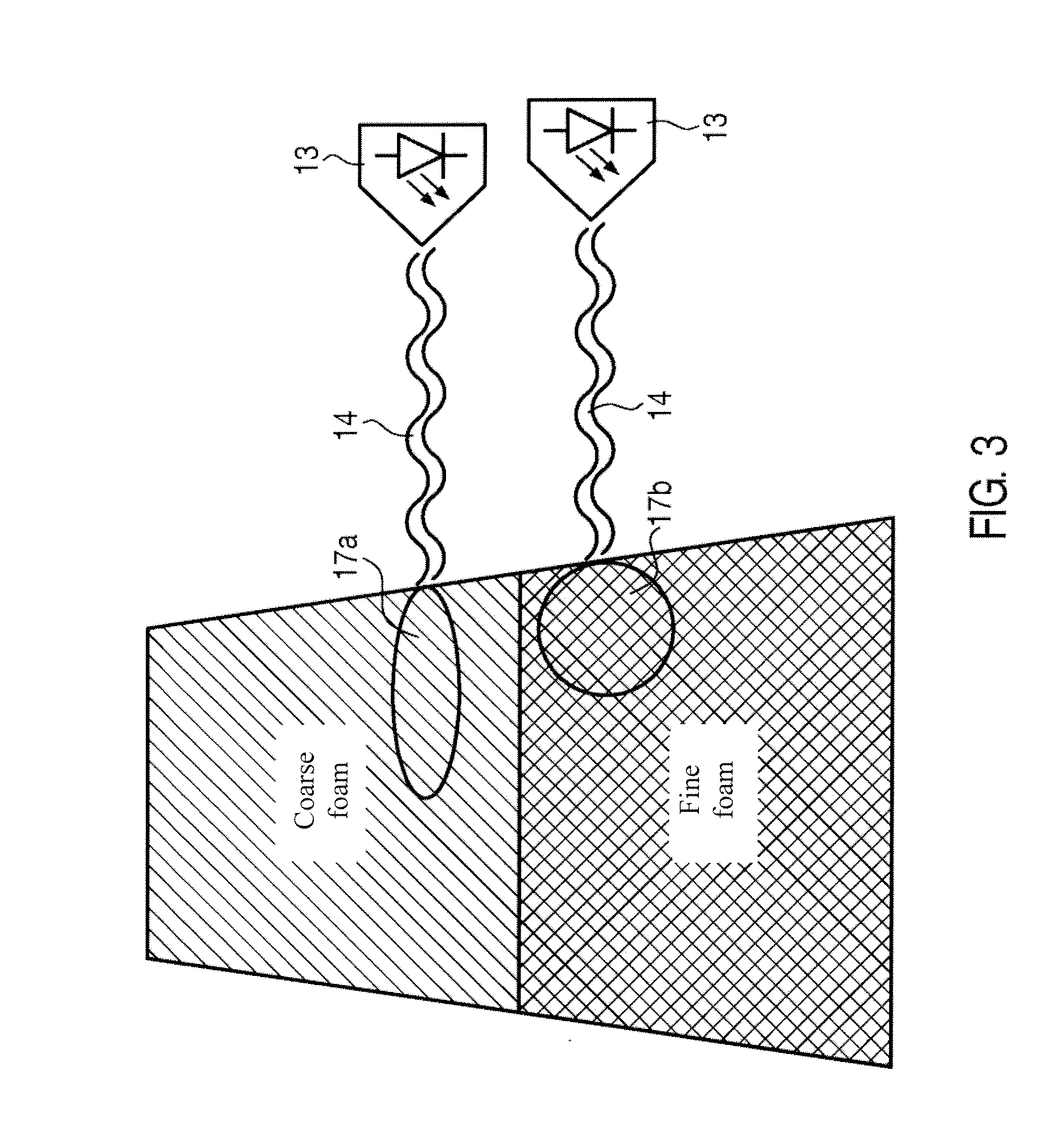Method and device for determining a foam density
a foam density and density technology, applied in measurement devices, instruments, scientific instruments, etc., can solve the problems of not being able to detect different foam structures, not being able to accurately determine the filling level, and only able to determine the decomposition rate of foams, so as to achieve the effect of little effort and little tim
- Summary
- Abstract
- Description
- Claims
- Application Information
AI Technical Summary
Benefits of technology
Problems solved by technology
Method used
Image
Examples
Embodiment Construction
[0028]In FIG. 1, an upper area of a beverage container is represented. This is a beverage bottle 10 with a conically tapering neck of the bottle 11. The neck of the bottle 11 ends in a thickening opening area 12. The beverage bottle 10 is a commercially available narrow-neck bottle as it is often employed in the beverage industry, in particular in the beer industry.
[0029]In the area of the neck of the bottle 11, several light sources in the form of lasers 13 are laterally disposed in the represented embodiment. Two lasers 13 each lie in one plane. Altogether, six lasers 13 are arranged in three planes arranged one upon the other. Thus, the neck of the bottle 11 is surrounded by lasers 13 at least in an area underneath the opening area 12, the lasers 13 being disposed along a longitudinal axis of the beverage bottle 12.
[0030]The lasers 13 which are disposed in one plane are positioned to be offset with respect to each other at the circumference. This means that the respectively emitt...
PUM
| Property | Measurement | Unit |
|---|---|---|
| density | aaaaa | aaaaa |
| foam density | aaaaa | aaaaa |
| liquid quantity | aaaaa | aaaaa |
Abstract
Description
Claims
Application Information
 Login to View More
Login to View More - R&D
- Intellectual Property
- Life Sciences
- Materials
- Tech Scout
- Unparalleled Data Quality
- Higher Quality Content
- 60% Fewer Hallucinations
Browse by: Latest US Patents, China's latest patents, Technical Efficacy Thesaurus, Application Domain, Technology Topic, Popular Technical Reports.
© 2025 PatSnap. All rights reserved.Legal|Privacy policy|Modern Slavery Act Transparency Statement|Sitemap|About US| Contact US: help@patsnap.com



